by Sher Delva | Aug 18, 2017 | Addiction, Drug Abuse, Family, Mental Health, Mood Disorders
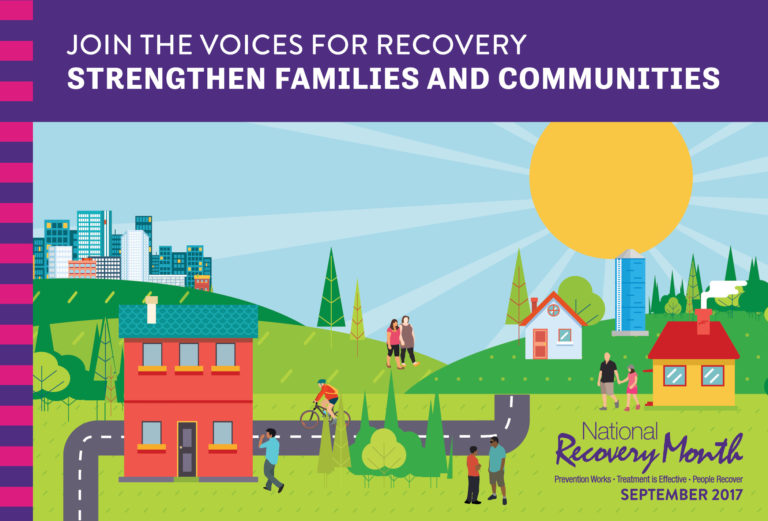
We are pleased to announce Dug and Heidi McGuirk of Palm Healthcare as special keynote speakers for this year’s Broward Recovery Month Event!
The Broward Recovery Event will honor special individuals in the community who are powerhouses for the recovery community.
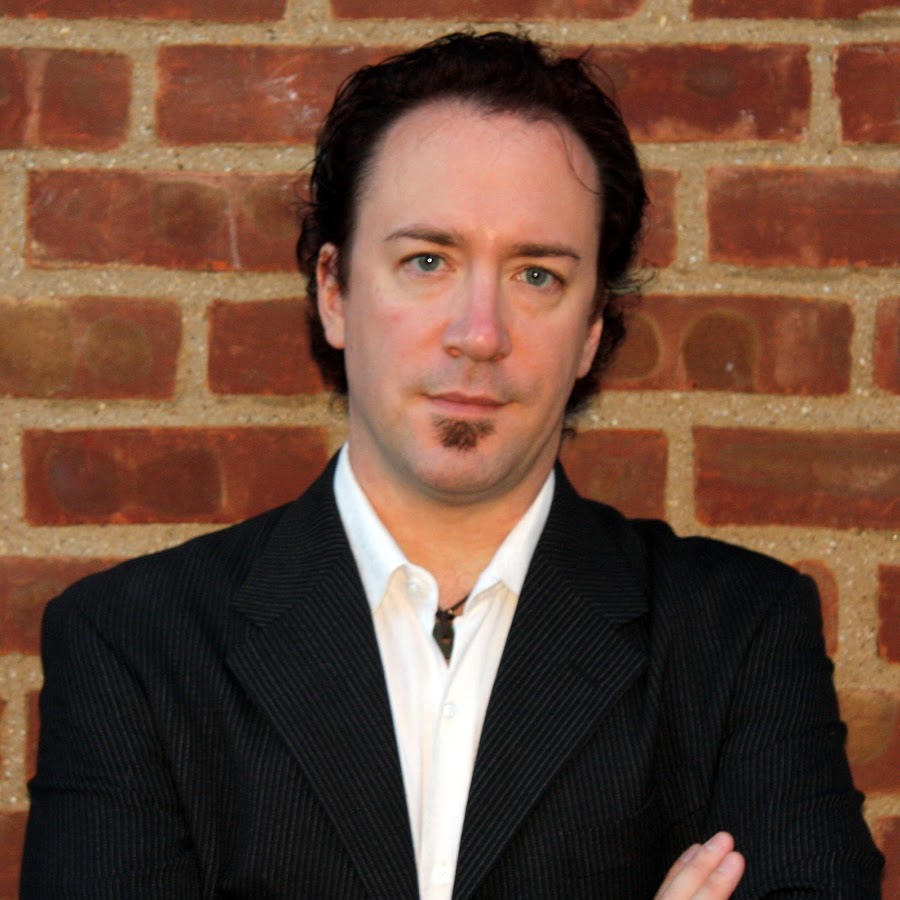 Dug McGuirk is an accomplished entrepreneur and inspirational speaker. As co-founder of Revolutionary Health, Dug is committed to transforming lives. Dug McGuirk is the VP of Training and Development for Palm Healthcare Company where he regularly teaches a variety of transformative classes.
Dug McGuirk is an accomplished entrepreneur and inspirational speaker. As co-founder of Revolutionary Health, Dug is committed to transforming lives. Dug McGuirk is the VP of Training and Development for Palm Healthcare Company where he regularly teaches a variety of transformative classes.
 Heidi McGuirk is an author, co-founder of Revolutionary Health, Master Relationship Coach and addiction professional who teaches several weekly classes at Palm Healthcare.She is the creator and CEO of Love Coach Heidi where she helps recovering co-dependent women learn how to love themselves first.
Heidi McGuirk is an author, co-founder of Revolutionary Health, Master Relationship Coach and addiction professional who teaches several weekly classes at Palm Healthcare.She is the creator and CEO of Love Coach Heidi where she helps recovering co-dependent women learn how to love themselves first.
Dug and Heidi both created an amazing family program for the families of addicted loved ones. The Family Program helps families navigate addiction and understand how to help their loved one instead of hurting them.
We would like to offer you the FREE GIFT of a checklist to help decipher if you are helping or hurting a loved one who is struggling with addiction.
Click for FREE GIFT
We encourage all to come out and support them in this year’s Broward Recovery Month event. Even if you are not familiar with the incredible work Dug and Heidi McGuirk do, you will gain so much from attending the event and hearing their words of inspiration and hope.
Here are the details:
Broward National Recovery Month Event:
When: September 9th from 11-3
Where: The War Memorial Museum
800 NE 8th St, Fort Lauderdale, FL 33304
What: Join special keynote speakers Dug and Heidi McGuirk for FREE food, fun, and inspiration.
This year’s theme for Recovery Month 2017 is Join the Voices for Recovery: Strengthen Families and Communities.
September marks the 27th anniversary of National Recovery Month. The purpose of National Recovery Month is to increase awareness and understanding of mental and substance use disorder and celebrate people who DO recover.
The 2017 theme highlights the value of family and community support. Recovery Month invites individuals in recovery and their family members to share their personal stories and successes to inspire and encourage others.
Broward Recovery Month will be an exciting, INSPIRING event for all to attend. You can make a difference by joining in the Recovery Month Effort.
Support is crucial when it comes to addiction recovery.
Events that support recovery help encourage and inspire those struggling with their addiction, as well as give an outlet to those who have had amazing success in recovery. These events were created to join the recovery community together and celebrate those who have achieved success in their journey.
Broward’s Recovery Month Celebration “honors outstanding individuals who have made significant contributions to helping people in our county remain sober.”
Overall, National Recovery Month helps instill a sense of belonging, safety, and security to the recovery community. This year, we encourage you to participate in events in your community that support addiction recovery. There are events happening nationwide for you to attend.
Whether you are new to recovery or have years of sobriety under your belt, everyone can benefit from attending major events like this. Families of addicted loved ones are strongly encouraged to attend because this year’s National Recovery Month specifically focuses on strengthening families. Families know more than anyone that addiction does not affect just the addict, it affects everyone around them too.
Millions of lives have been transformed through recovery. Often, these successes go unnoticed. Recovery Month is an excellent way for everyone to celebrate these accomplishments.
Addiction affects everyone, not just the addict. Therefore, if you or someone you know is currently struggling, please reach out. We want to help. Do not wait. Please call toll-free now.
CALL NOW 1-888-922-5398
by Justin Mckibben | Aug 9, 2017 | Drug Policy, Law Enforcement, Naloxone, Prescription Drugs, Recovery, Stigma
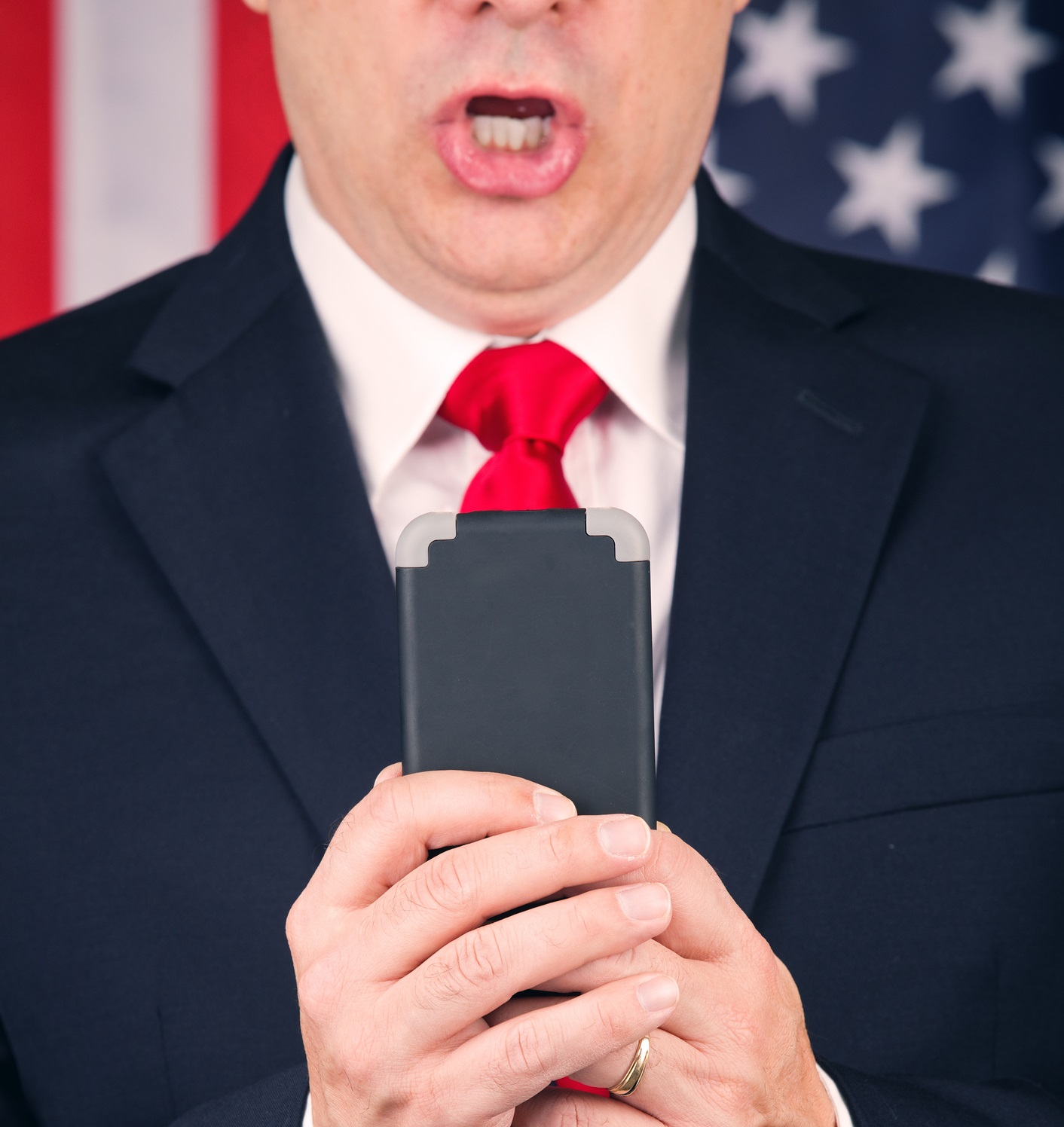
President Donald Trump promised a “major briefing” via his favorite publication… twitter… this Tuesday morning. Many people were expecting something big related to the request from the national opioid commission to declare a state of emergency for the opioid epidemic. But alas, this was not the case. President Trump made no announcement on new policies in the fight against opioids. Instead, he made a comment that sounds a lot like Nancy Reagan telling everyone to ‘just say no’ in the 80s, and we all know how well that worked.
This is concerning to so many who put stock in President Trump when he said he would make fighting the opioid epidemic a priority. Yet, so many feel like he is absent on the subject when it comes to establishing any initiatives or taking proactive action.
President Trump vowed on Tuesday that the United States will “win” the battle against the heroin and opioid outbreak. But instead of presenting a plan to support and reinforce treatment initiatives and other programs, the focus on his comments were claims to-
“- protect innocent citizens from drug dealers that poison our communities.”
The closer we look at the administration’s latest actions, the more it seems like this administration prefers the failed ‘just say no’ and War on Drugs mentality than actually offering a progressive answer.
President Trump Says Drugs are Bad
Probably the one part people are most annoyed with is when President Trump stated:
“Maybe by talking to youth and telling them ‘no good, really bad for you in every way’, but if they don’t start it will never be a problem.”
I feel like most of us did a good old fashion face-palm on this one… because DUH! We know drugs are bad (thanks Mr. Mackey) and we know talking to kids about drugs matters. That is why programs like Drug Abuse Resistance Education (D.A.R.E.) have been around for decades. However, we also know from D.A.R.E.’s track record that this kind of program hasn’t been particularly successful at stopping drug use either!
While giving this latest briefing from his 17 day “working vacation” from his golf club in Bedminster, New Jersey, President Trump also stated:
“The best way to prevent drug addiction and overdose is to prevent people from abusing drugs in the first place,”
“I’m confident that by working with our health care and law enforcement experts, we will fight this deadly epidemic and the United States will win.”
Now while it is true that addiction can’t technically develop if someone never uses substances, this still sounds a lot like ‘just say no’, which we all know does not work as a drug policy. Prevention is key and maybe with more detail about Trump’s plan on how to prevent drug use we could see where this comment is going. But as it stands, these comments just sound like more of the same.
After all, Trump’s Attorney General Jeff Session does seem to agree with the old War on Drugs tactics. Why, we may never know.
It is incredibly frustrating to advocates and experts involved in the addiction recovery community, as well as for citizens all across the nation who are hoping for some real change. Why- because we know that ‘just say know’ failed. We tried to just tell kids that drugs are bad for them and not to do them, but the epidemic still happened! And needless to say, just saying no is not going to help us with the overwhelming rates of addiction, overdose and death that we are already dealing with.
Far beyond that, understanding and overcoming addiction is about a lot more than just knowing its bad for you.
Is President Trump Ignoring Suggestions?
The president himself appointed the opioid commission, chaired by Republican New Jersey Governor Chris Christie. Only a week ago the panel urged President Trump to “declare a national emergency”, citing the tragically high overdose and death rates across the country. In the report issued by the opioid commission there were numerous recommendations that many were hopeful would come to fruition as soon as possible. Among these recommendations there is:
- Expanding treatment facilities across the country
- Educating and equipping doctors about the proper way to prescribe pain medication
- Equipping all police officers with the anti-overdose remedy Naloxone
All of these suggestions seem like they would make a pretty big impact on the current predicament. Empowering treatment providers in more of the U.S. can help get more addicts off the streets and introduce them to the option of getting well. Putting more power in the hands of doctors to safely and effectively provide medications could help reduce the staggeringly high prescription drug abuse rates. Giving the overdose antidote to more first responders could save so many more lives.
And yet, President Trump did not address a single one of these recommendations, or event suggest that one of them was on his current to-do list.
Instead, he went back to his go-to argument for solving all of our problems… our borders. Again, President Trump doesn’t give any indication as to planning for expanding treatment or Naloxone access. Nope… he just promises to be-
“-very, very strong on our Southern border.”
Did he talk about training doctors in order to avoid issues with prescription drugs? Nope. Instead he claimed:
“We’re talking to China, where certain forms of man-made drug comes in and it is bad,”
Yes, again we understand… ‘drugs are bad… mmmkay.’ But seriously, this is not the first time that this administration has shifted the focus from helping treat those who have suffered from drug addiction to ‘tough on crime’ tactics and border security. But time and time again experts in law enforcement and drug policy insist that the answer is not in attacking the supply side, but in treating those who suffer now.
Health and Human Services Secretary Tom Price told reporters they haven’t taken anything off the table, but that they believe at this point the necessary resources and focus can be addressed without an official declaration. However, looking at what declaring the emergency would have done, why would doing it be a bad thing?
Why a National Emergency Matters
The reality is, we are all well aware of the severity of the opioid epidemic by now. However, declaring a national emergency does actually count for something.
If President Trump were to declare a national emergency it would speak volumes to the scope of the issue on a national platform. Also, coming from one of the highest authorities in the nation, it would have opened the door to making those other suggestions happen.
According to Juliet Sorensen, a professor at Northwestern University Pritzker School of Law, Trump’s declaration could have:
- Allowed the executive branch to direct federal funds to expand treatment facilities
- President Trump would have also been able to direct funds to equip police with Naloxone
- Allowed him to provide the FBI, the Drug Enforcement Agency and other law enforcement agencies with more money to focus on the manufacturers and smugglers of dangerous drugs like fentanyl
But maybe one of the biggest impacts it could have had would have been on the rest of the House and the Senate. Fighting the opioid epidemic is one of the very few topics in politics right now that has bipartisan congressional support. Declaring a national emergency could give President Trump the perfect opportunity to unite both sides of the aisle and create cooperation and momentum.
This is a vital issue that should absolutely be a priority. Therefore, the idea of returning to an archaic, outdated philosophy concerning drug use is annoying at the least and potentially terrifying for some. The epidemic shows no sign of stopping anytime soon. Maybe it is time to do more than just tell people drugs are bad. If we want to do some good, we need to support each other with compassion.
Palm Healthcare Company values compassionate, comprehensive and innovative holistic treatment opportunities to help save the lives of those that are suffering, and we encourage professionals, community leaders and family members to get involved in helping change lives for the better. If you or someone you love is struggling with substance abuse or addiction, please call toll-free now.
CALL NOW 1-888-922-5398
by Justin Mckibben | Aug 2, 2017 | Addiction, Drug Abuse, Heroin, Opana, Opioids, Prescription Drugs
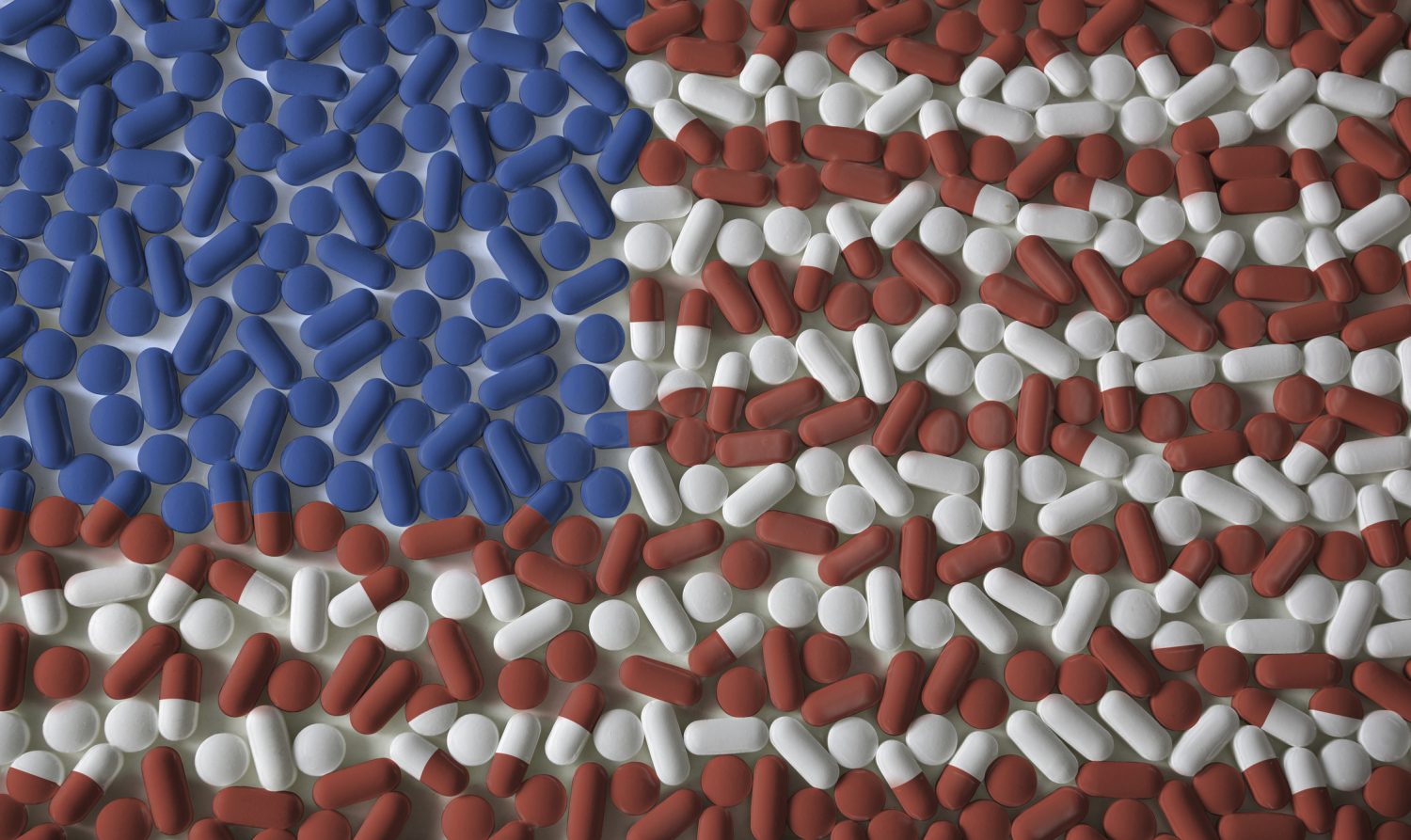
America knows all too well the devastation of opioid addiction. With an overdose outbreak that has been progressively damaging and related death rates becoming increasingly alarming, we have reached new depths of drug-induced desperation. Therefore, the news from the Commission on Combating Drug Addiction and the Opioid Crisis is not all that shocking. The panel charged with examining the nation’s opioid epidemic is now urging the President to declare a national public health emergency to combat the ongoing crisis.
When we look at the history of American presidents announcing a ‘state of emergency’ it typically has to do with national security, foreign policy and war, or natural disasters and viral illness. So, to put the issue of addiction up next to these drastic calls to action might just bring a new level of intensity to battling opioid addiction in America.
American overdose deaths involving opioids have quadrupled since 1999. From 2000 to 2015, more than 500,000 people died of drug overdoses. The majority of these overdose deaths have opioids involved.
In America, drug overdoses now kill more people than gun homicides and car crashes combined.
Opioid Commission Calls for Action
The Republican New Jersey Governor Chris Christie was enlisted as the chair of the opioid commission back in March. The opioid commission also includes:
- Democrat Governor Roy Cooper of North Carolina
- Former Democratic Representative Patrick Kennedy of Rhode Island
- Republican Governor Charlie Baker of Massachusetts
At the time the commission was created Chris Christie said the idea behind the administration’s new approach to fighting addiction would focus a lot on assisting the Center for Disease Control and Prevention (CDC). This week the opioid commission’s statement calling for the President’s immediate action states:
“Our citizens are dying. We must act boldly to stop it. The first and most urgent recommendation of this Commission is direct and completely within your control. Declare a national emergency.”
While insisting that the administration put forth an emergency declaration, the specially appointed opioid commission said that Trump is the-
“-only person who can bring this type of intensity to the emergency and we believe you have the will to do so and to do so immediately.”
The opioid commission was deliberate in the details, acknowledging that with 142 Americans dying every day from drug overdoses-
“America is enduring a death toll equal to September 11th every three weeks.”
When you think about it in this context, the statistics become even more startling and horrifying. The fact that so many men, women and even children in America are losing their lives to drugs like heroin and prescription pain medication. The opioid commission went on to say:
“Your declaration would empower your cabinet to take bold steps and would force Congress to focus on funding and empowering the Executive Branch even further to deal with this loss of life,”
“It would also awaken every American to this simple fact: If this scourge has not found you or your family yet, without bold action by everyone, it soon will.”
In the last few months there has been some waves of criticism against the opioid commission after missing two deadlines to release this report in June and July. Now that the report is finally here, what can be done to address the concerns the opioid commission brings with it?
Will the White House Take Action?
According to initial reports the White House intends to “immediately” review the recommendations of the opioid commission. In the statement from the White House:
“The opioid crisis is a tragedy that has been harming America’s communities for far too long. We appreciate the Commission’s hard work on this important interim report. We will immediately begin reviewing its recommendations, and eagerly await its final report.”
The final report from the opioid commission is expected to be submitted during October. Still, many are hoping the Trump administration does not wait that long to start planning for a response.
The opioid commission made many recommendations in the interim report for efforts to curb the opioid epidemic and the increasingly high death rates. Those recommendations include:
- Rapidly increase treatment capacity for those who need substance abuse help
- Establish and fund better access to medication-assisted treatment programs
- Make sure that health care providers are aware of the potential for misuse and abuse of prescription opioids by enhancing prevention efforts at medical and dental schools
- Equipping all law enforcement in the United States with naloxone to save lives
Naloxone is the opioid overdose antidote used by first responders to save people overdose victims. So far access to Naloxone and Narcan, the name brand, has expanded, but many think not nearly enough.
With the fight for healthcare in Congress seeming to hit every rough patch possible on the road to settling on legislation, people are already worried about how coverage may or may not change for tens of millions of Americans. So the concern for how to face a growing addiction problem while simultaneously afflicted with a potential healthcare crisis is very real for a lot of people.
Time will tell if the Trump administration acts on the suggestion to declare a state of emergency to call more action toward the opioid epidemic. And if they do declare it, what will change?
Palm Healthcare Company Offering Holistic Health
While Palm Healthcare Company is not qualified to fix all the problems in politics, we do believe in providing quality care to as many men and women struggling as possible. Palm Healthcare Company facilities create a safe, comfortable and effective environment to experience powerful and life-changing courses and treatments focused on holistic health.
While the opioid epidemic may not be an easy issue to solve, Palm Healthcare Company believes in helping those who have suffered from addiction to opioids and/or other drugs find a new way and a second chance. With medical detox, personalized inpatient and outpatient treatment options and aftercare opportunities such as Recovery Coaching, Palm Healthcare Company wants to support every part of your journey.
Overcoming the opioid epidemic means helping those who have suffered heal.
Drug abuse and addiction is a devastating and deadly disease, and providing effective and compassionate treatment makes a lifelong difference. If you or someone you love is struggling with substance abuse or addiction, think about who you want to be working with to find a real solution. Please call toll-free now.
CALL NOW 1-888-922-5398
by Justin Mckibben | Aug 1, 2017 | Addiction Treatment, Drug Abuse, Drug Policy, Inpatient Treatment, Law Enforcement, PAARI, Recovery, Vivitrol

Against the back-drop of divisiveness about the relationship between the public and law enforcement, it is important to recognize the police departments and citizens working together to triumph over the greatest obstacles our communities face. All across America the words ‘protect and serve’ still mean something, and many of the brave men and women behind the badge are fighting to help addicts get a second chance.
The Gloucester Police Department in Massachusetts set an inspiring new precedence back in 2015 when they began an initiative to allow drug users come to the police to ask for help. Users were told they could submit drugs to local law enforcement without fear of punitive action, and ask for help getting into inpatient treatment. This amazing shift in approach created a new sense of compassion for the addicts struggling to get clean, setting up a new system to try and heal the community instead of punish it. Police helping addicts into treatment has since become a growing trend in several states as more and more officials realize that the old ways aren’t really working.
A study published December of 2016 in The New England Journal of Medicine found the Gloucester program was showing admirable success.
Community advocates, police officers and political officials across America have begun modeling new programs after this approach, while others are pushing for similar opportunities. Some of these programs have been especially successful, while others have not been particularly sought after. Checking in on the way different areas are handling the opioid crisis and overdose outbreak, these initiatives make us believe there is still hope on the horizon.
Programs with Police Helping Addicts into Treatment
Let’s look at some of the programs that have adopted this new approach to supporting their suffering neighbors instead of trying to punish their way out of the problem.
-
Safe Passage
The Safe Passage program was also started 2 years ago by the Police Department of Dixon, Illinois. Since then it has extended to a few other close by counties. Safe Passage has helped place 170 people into treatment, and so far the Police Chief Danny Langloss reports that more than half of those who got access to treatment through the program have had success after rehab.
Chief Langloss claims that in 2016, misdemeanor and felony drug arrests dropped by 39%, and he believes Safe Passage had a lot to do with it.
-
A Way Out
Police helping addicts into treatment in Lake County have joined forces from several areas to offer participants a change to receive addiction treatment. A Way Out launched a year ago, and according to their sources an average of around 12 people a month have reached out for help through the program. If this went on for a steady 12 months that means at least 144 people have been given a chance at getting help.
A Way Out accepts participants no matter where they live. According to Mundelein Police Chief Eric Guenther some families have brought their loved ones from different states to get access to treatment. Some instances there have even been individuals with criminal charges who have their warrants waived to enter the program.
-
Connect for Life
Naperville, Illinois also has a strong force of police helping addicts into treatment. Their version, called Connect for Life, directly connects individuals in need of treatment with social workers and recovering addicts who have stayed clean after treatment called ‘recovery liaisons’.
The idea here is to stay connected with each individual through the process of finding treatment, and beyond that to help them with finding sober homes, employment opportunities and other resources.
-
Kindness
Anaheim Police Department in California has its own program offering free treatment to any drug users willing to ask for help. Part of the Kindness initiative with police helping addicts into treatment is the offer to receive the Naltrexone implant, which is designed to block the effects of opioids and alcohol in the brain.
Law enforcement officials in Anaheim acknowledge that they cannot arrest away addiction. They are hopeful eliminating the fear of asking for help will be instrumental in saving more lives.
-
HOPE
In Nashville, North Carolina the Police Department started an initiative called HOPE, modeled after the Gloucester Police Department’s program. Since it launched back in February of 2016, about 172 people from multiple states have sought treatment through HOPE.
Again, police notice a profound impact on their community, crediting a 40% drop in crimes related to substance use disorder to the HOPE program.
-
Chatham Cares 4 U
A year ago in July, the Chathman, New York Police Department teamed up with PAARI to create the Chatham Cares 4 U Outreach Initiative Program. The police helping addicts into treatment urged their communities to feel safe coming to the police station to turn over drugs and paraphernalia, and to ask for help with treatment.
Chatham Cares 4 U and the success it has brought to the community has inspired other police departments in the state to create similar addiction recovery initiatives in their communities. Chathman Police Chief Volkmann also travels around New York to speak to police departments and other organizations about the program.
-
Safe Stations Program
In Maryland, Anne Arundel County Police and Fire Departments are collaborating with the Annapolis Police and Fire Departments to offer help to drug users in their area. The Safe Stations program launched in April of this year, opening the doors to the combined 38 stations for individuals seeking help with their addiction. Safe Stations was the first of its kind in Maryland, with locations open 24 hours a day, 365 days a year to people needing help.
In just the few months it has been open, this initiative of police helping addicts into treatment has already placed over 18 people into treatment.
The Police Assisted Addiction and Recovery Initiative
The PAARI program is a nationwide nonprofit organization that was started to support any local police departments in their efforts to work with opioid addicts. In the midst of the opioid epidemic there has been a massive movement toward innovative strategies for helping people, and the PAARI united after the Gloucester Police Department instituted their revolutionary program to focus on saving lives and changing them for the better.
The PAARI works with various elements across the country, including:
- The medical community
- Science-based recovery programs
- Police departments
PAARI is made up of private citizens, philanthropists, business owners, law enforcement leaders, and prominent members of the academic community who all share the same mission of helping those addicted to drugs in their area get the help they desperately need. PAARI coordinates with volunteers, corporate partners and treatment centers, along with police helping addicts into treatment.
The first annual report for the PAARI made a very exciting statement, saying:
“Communities that have joined PAARI have observed as much as a 25% reduction in crimes associated with addiction, cost savings by diverting people into treatment rather than triggering the criminal justice system, as well as an enormous increase in trust from their communities.”
Participants in the program speak in overwhelming praise of the PAARI program’s methods.
More Compassion Changing the World
While some people are still pushing the argument that ‘tough on crime’ and the War on Drugs are the best way to end the addiction issue, we have seen time and time again that we cannot punish and imprison our way out of addiction. Compassionate programs using community resources to help people get better instead of making their lives worse seems like a better way of taking care of each other.
We are happy to see so many police helping addicts into treatment all over the country, and we hope more communities chose to use resources to help those struggling find a chance to change their lives.
Palm Healthcare Company knows that compassion is a key element of comprehensive and effective care for substance abuse and addiction treatment. Our hope is that more community leaders, politicians and law enforcement officials continue working together to make everyone’s lives better. If you or someone you love is struggling, please call toll-free now.
CALL NOW 1-888-922-5398
by Sher Delva | Jul 5, 2017 | Addiction
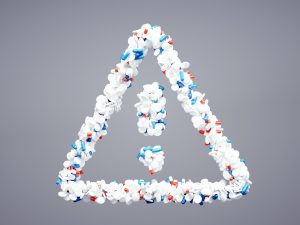
Benzos are so overused that they top all prescriptions in psychiatric medicine and are among the most prescribed medication of any type in the United States. Nearly 50 million benzos prescriptions are written every year.
Prescriptions for benzos have skyrocketed over the past two decades. Between 1996 and 2013, the number of prescriptions for benzodiazepines more than tripled and fatal overdoses more than quadrupled.
What’s the Big Deal?
Benzos are known for helping with anxiety disorders and insomnia, so what’s the big deal if they are heavily prescribed?
Well, there are a couple of reasons why this is a major problem.
First, there is evidence indicating these drugs do not work well over the long-term. Studies reveal that long-term use of benzos can increase anxiety symptoms. Furthermore, it is possible to treat anxiety and sleep disorders without medication, or at least with other medications besides benzos.
The second problem is the addiction and dependence risk. People who receive high doses of benzos can become physically dependent fairly quickly. Without medical supervision, the withdrawals from benzos are severe, ranging from intensified anxiety to high blood pressure, seizures, and convulsions.
The longer someone uses benzos, the greater the likelihood of addiction. People who misuse benzos tend to take higher-than-prescribed doses or mix the pills with alcohol or other drugs. Benzos are often chewed or crushed which interferes with the timed-release formula and speeds up the effects. This way of using benzos is extremely dangerous.
A Deadly Combination?
The true dangers of benzos really amplify when they are taken with other substances like opioids and alcohol. The risk of combining benzos and opioids is well-known, yet many doctors prescribe benzos and opioids together to patients.
From 2001 to 2013, benzos and opioid prescriptions increased by 80%, according to an analysis by researchers at the Stanford University School of Medicine. It is not considered safe to use both together yet this is fairly standard practice.
Opioids vs. Benzos?
Highlighting the dangers of benzos is not intended to diminish the significant dangers of prescription painkillers. Make no mistake, we are in the midst of an opioid epidemic, and opioid addiction has become a national crisis. However, in 30 percent of opioid-related deaths, a combination of benzos and opioids caused the overdose. That’s why it is so important to talk about benzos when we are discussing the opioid epidemic.
Why is this combination so deadly?
Opioids and benzos both slow down the body systems, particularly the respiratory and cardiovascular systems. Therefore, it is not difficult to understand why this combination is so risky. You are essentially combining two substances that slow down the functioning of your body. If you add a cocktail on top of that, it only compounds the problem. In worse case scenarios, this combination of substances causes breathing to stop.
In addition, alcoholics regularly abuse the benzo alprazolam, known by its brand name Xanax. Alcohol is a depressant so combining alcohol with the sedative effects of benzos increases the likelihood of overdose and respiratory failure.
Should Doctors Take the Blame?
The use of benzos often begins in the form of a prescription. Dual prescriptions of benzos and opioids are far from uncommon. Doctors are more likely to prescribe to patients who complain of pain, anxiety, and insomnia during a limited 15-minute consultation time.
In this rushed state, a physician may desire to help a patient but not have the time to explore the underlying causes. Therefore, medication becomes the easiest treatment. It unclear whether doctors are adequately warning their patients of the potential dangers of combining these drugs to help prevent addiction. As for now, it is difficult to place the blame on one person or thing, but one thing is for certain: people need to know the risks.
—
Overall, more and more people are struggling with addiction, and overdose death numbers have reached epidemic levels. If you are currently struggling with addiction, please do not wait. Recovery is possible. Call toll-free today.
CALL NOW 1-888-922-5398

 Dug McGuirk is an accomplished entrepreneur and inspirational speaker. As co-founder of Revolutionary Health, Dug is committed to transforming lives. Dug McGuirk is the VP of Training and Development for Palm Healthcare Company where he regularly teaches a variety of transformative classes.
Dug McGuirk is an accomplished entrepreneur and inspirational speaker. As co-founder of Revolutionary Health, Dug is committed to transforming lives. Dug McGuirk is the VP of Training and Development for Palm Healthcare Company where he regularly teaches a variety of transformative classes. Heidi McGuirk is an author, co-founder of Revolutionary Health, Master Relationship Coach and addiction professional who teaches several weekly classes at Palm Healthcare.She is the creator and CEO of Love Coach Heidi where she helps recovering co-dependent women learn how to love themselves first.
Heidi McGuirk is an author, co-founder of Revolutionary Health, Master Relationship Coach and addiction professional who teaches several weekly classes at Palm Healthcare.She is the creator and CEO of Love Coach Heidi where she helps recovering co-dependent women learn how to love themselves first.




